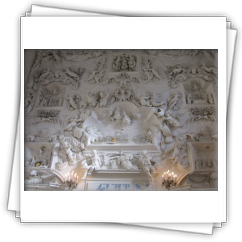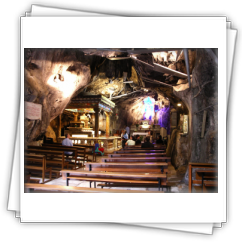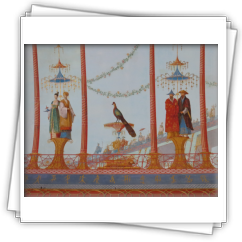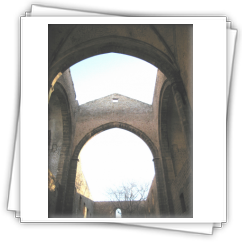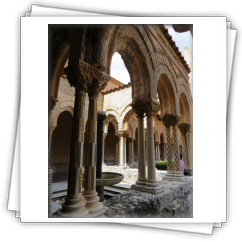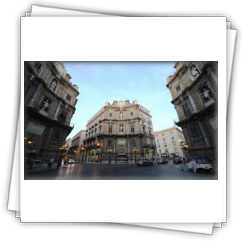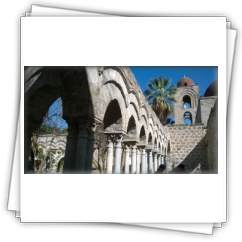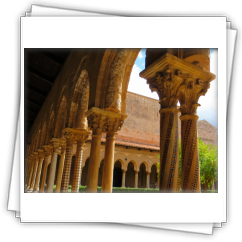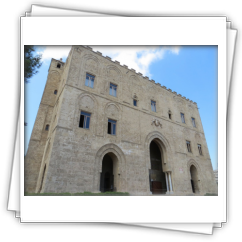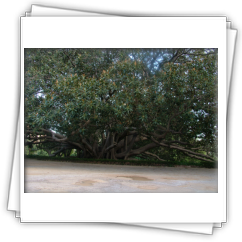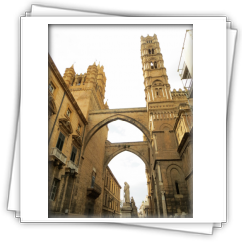what to see in 2 days - visitapalermo
Main menu:
- who I am
- guided tours
- what to see in Palermo
- must-see places
- usel info
- reviews
what to see in 2 days
what to see in Palermo
Do you have 2 days to visit Palermo?
Then you have the opportunity to not only take in the unmissable sites and attractions of this fascinating city,
but also to broaden the range of your visit and discovery further delights.
1st day
For your first day I recommend "What to see in 1 day" to which, given the extended time available,
we can add visits to other places that will deepen and enrich your discovery of Palermo.
Start your visit from the church of S. Giovanni degli Eremiti with its delightful cloister and its exotic garden.
Since 2015 this charming little church has been included in the Arab-Norman route declared a UNESCO World Heritage Site.
Leave the traffic and chaos of the city behind you and immerse yourself in a hidden corner that seems of another time.
Continue on to the nearby Palazzo Reale, where the visit to the Palatine Chapel is a 'must see'.
Upon arriving at the Cathedral, I suggest going beyond the usual tour, a visit to the rooftop area.
The Cathedral of Palermo was, like many Sicilian Norman churches, a fortified church, with a whole system of walkways
on the roofs and within the towers at the four corners that allowed the guards to control and defend the city from above.
A religious building, therefore, also with a military function.
Today, from the rooftops you can enjoy a wonderful 360° view of Palermo from the sea to the mountains that protect it
and especially of the ancient city with its many elegant and colourful domes which are apparent all around.
After leaving the cathedral, continue along the Càssaro, the historic main road laid by the Phoenicians, founders of Panormus in the seventh century B.C., which still connects, the sea to the small hill of the Royal Palace to this day.
Along the Cassaro, take a trip to the church of SS.Salvatore, a church of Norman origin,
refurbished in the Baroque period and covered with Sicilian colored marble of mixed inlay.
The building is particularly interesting as it is one of the very few examples in Palermo
of a church with an elliptical plan; it suffered heavy bombing during the Second World War
but was promptly rebuilt following a restoration technique
which allows the visitor to distinguish the original parts from those rebuilt.
Continue along the Cassaro up to the Quattri Canti, turn right to enjoy the spectacle of Piazza Pretoria,
surrounded by the majestic churches of S. Caterina d'Alessandria and S. Giuseppe dei Teatini and arrive in Piazza Bellini,
where you should visit the church of S. Maria dell'Ammiraglio, known as the Martorana.
At this point, after admiring the beautiful mosaics of the Martorana, take the 'Descent of the Judges',
cross via Roma and from piazza S.Anna, enter the Kalsa district.
After visiting the beautiful church of S. Francesco and the little jewel that is the oratory of S. Lorenzo,
which once held a painting of Caravaggio unfortunately now stolen, you can stop
at the Antica Focacceria S.Francesco and taste the famous Palermo street food.
Then continue your walk along the ancient Via Alloro where you can enter the Regional Gallery of Palazzo Abatellis:
the fresco of the Triumph of Death and the Annunciation by Antonello da Messina are well worth a visit.
Take one of the alleys that lead you to Piazza Magione and here, beyond the medieval church of the same name,
ensure you visit the church of Spasimo. The church is a symbol of the rebirth that the district has experienced in recent years,
an amazing experience due to the open sky that reveals itself above you ...
Then return to Piazza Marina, passing by the popular Piazza Kalsa and along Via Butera or the Foro Italico,
conclude your walk to The Cala, the ancient port of Palermo,
and enjoy the view of the small marina which is overlooked by the city.
2nd day
And here you are on your second day in Palermo. There is still so much to see and savor, so let's go!
I suggest, first of all, making a small detour out of town and going to admire the exceptional Cathedral of Monreale.
We are a few kilometers from the center of Palermo, so you will need a means to get there.
In case you opt for public buses, between traffic and waiting at stops, equip yourself with a fair amount of patience.
Your own vehicle, if you have it, is a better option or negotiate for a taxi ...
In Monreale, the Norman cathedral constructed at the end of the 12th century awaits you with its exceptional mosaic cover
(consider that it is more than 6000 square meters of mosaics of Byzantine workmanship)
and the suggestive cloister, a perfect square with dozens of decorated columns and capitals worked in relief.
Take a quiet walk inside the silent cloister and, among the many sculptures, look for the famous capital
with the image of the Norman king William II who, kneeling, offers the model of the cathedral to the Virgin ...
Returning to Palermo, a place that many do not want to miss out on visiting is the Capuchin Catacombs.
If you have a taste for the macabre, then this is the place for you!
Hundreds of mummies of Capuchin friars and rich Palermitans who, for centuries
(from the beginning of the 17th century until the beginning of the 20th century when this type of burial was forbidden)
were buried, or even, exposed here.
Another undoubtedly interesting stop in Palermo, a little outside the historic center
and thereby needing your own vehicle to visit, is the Palazzo della Zisa.
The Normans named this palace that is located outside the city walls 'Al-Aziz The Splendid'.
It is a well-preserved example of a civil building, similar in style to some buildings in North Africa,
where the sovereigns entertained and relaxed during the hot summers,
devoting themselves to leisure and entertainment activities.
It's easy to imagine it surrounded, as it once was, by an immense park,
with artificial lakes, lush vegetation and hunting pavilions.
The surrounding landscape has unfortunately changed, but the palace is worth a visit.
A stone's throw from Zisa you can take a leap in time and visit the Villino Florio,
an extraordinary example of Liberty architecture, miraculously surviving the devastating "sack of Palermo".
Not to be missed if you come to Palermo, is a trip through one of its historic markets.
There are three in Palermo, all of ancient, probably Arab origin, that remain like time capsules,
places out of time and space and sometimes from rules ...
The Capo market extends to the district of the same name, accessible from Porta Carini,one of the ancient gates of the city,
this bringing you past the sites of the two main nineteenth-century theatres: Teatro Politeama and Teatro Massimo.
At the Capo, make sure to find the time to visit the small church of The Annunciation at the Capo,
one of the richest jewels of Baroque Palermo and also to visit the church of San Agostino with its beautiful Renaissance cloister.
Ballarò is another of Palermo's traditional markets, its name derived from the Arabic Suq al Balari, where in the Arab era,
sellers would come from Balara, near Monreale and came to trade their goods.
Even here, between alleys and streets where there is barely space to pass between stalls,
you can lose yourself in the bright colors of fruit, vegetables and fish and treat yourself to some typical street food snacks.
When in Ballarò it's worth visiting the Jesuit church of Casa Professa, a triumph of Baroque Palermo excesses.
This was largely rebuilt after Second World War bombing destroyed the roof and part of the aisles.
If you still have the energy, why not climb the medieval S. Nicolò Tower?
A short flight of steps along a narrow stone spiral staircase to get to the top of one of the ancient civic towers,
from which it commanded a view of all the surrounding areas, later being converted into a bell tower.
From here, just above a bustling little square until late at night,
you can enjoy breathtaking views of the roofs, bell towers and domes in the heart of Palermo.
Finally, the day can be rounded off by taking a walk in the Vucciria area.
The Vucciria market is perhaps one of the best known in Palermo,
thanks to Renato Guttuso's famous painting of the same name.
Unfortunately, today the market has lost a lot of its wealth and charm and it is the least lively of the three historical markets.
The area, with the central Piazza Caracciolo, comes alive especially in the evening
and is now a meeting place for young people who spend the evening eating fish roasted on one of the numerous grills,
along with a glass of wine at the historic Taverna Azzurra.
